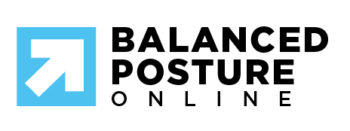oh man, i tore my butt muscle (?)
You rarely hear of someone who pulled their glute in training, or is “out with a glute strain”. But you DO hear of the common hamstring injury, “blowing a hammie”, or “blowing a disc” in the lower back. But, if you think about it, what’s the common denominator? What separates your lower back from your hamstrings ? Your glutes of course!
The glutes have become the centre of attention here in the gym scene and although we are focusing more and more on them, are we actually getting them working? Just because you are doing a glute exercise does not mean you are actually working them. You’ll often find me with clients doing glute bridges, over, and over again…. controlling the movement and ensuring they are switching on their glutes more than their hamstrings and low back muscles (more details below). This is because a glute bridge, as simple as it seems, can very easily be done wrong. It is a “glute” bridge, not a “lower back” bridge. When a client finishes the exercises and says they feel it in their lower back, I know we need to revisit their pelvic positioning to ensure maximal glute activation. If they cramp in their hamstrings, then their glutes are most likely on holiday.
Just because you are doing a glute exercise does not mean you are actually working them.
If the body isn’t ready for a glute bridge, then it isn’t ready to progress to single leg bridges, or barbell hip thrusts, or most other progressions with increased loads. If we progress too soon, we are at huge risk of injury to the lower back and/or hamstrings. When the glutes aren’t strong enough, these other areas will be forced to pick up the slack, and this can lead to injury. This is nothing to be ashamed of, and to be honest, most people in the gym have a strength imbalance with their glutes. What needs to happen is a regression in the exercises we are doing to ensure we are activating the glutes properly, getting them stronger, and then we can start progressing through to more intense exercises.
________
Or, if you’d like to set up a private workshop for your own group, colleagues, friends, or training partners, just shoot us an email to organise a day and location (we will travel for workshops!).
________
Can your Weak glutes cause shoulder pain?
Weak glutes can lead to an imbalance in your biomechanics and gait pattern, which can contribute to knee pain, hip pain, and even shoulder pain. If the hips are uneven with one side sitting higher or more forward than the other, then the spine will often be effected and create a “crooked” curve somewhere along the way, offsetting the alignment of the scapulae, shoulders, and neck. Below the hips, weak glutes can cause one leg to compensate for the other and it can also contribute to a collapsed knee and ankle causing a lot of issues with knee pain and poor ankle mobility. These are just some generalities that I see in many clients, and have seen many times over in the past 15 years I’ve been practising. This is why shoulder pain and knee pain can most likely be traced back to a weak core and weak glutes. No joke!
So when your hamstrings are cramping during a hip bridge, or your lower back is sore after hamstring curls…. think about how your glutes could be the problem!
Try these glutes bridges during your next session and see how you go!
glute bridges


![]()


Lauren
August 2, 2018Great article Jo!!
jozervas@gmail.com
June 18, 2017Thanks so much Melinda, I’m glad you are finding it helpful 🙂
Melinda Mosenthal
May 30, 2017Thanks very much for sharing your newsletter JO. I am enjoying reading and find the information very helpful. Helps me to review what we have discussed in the gym.